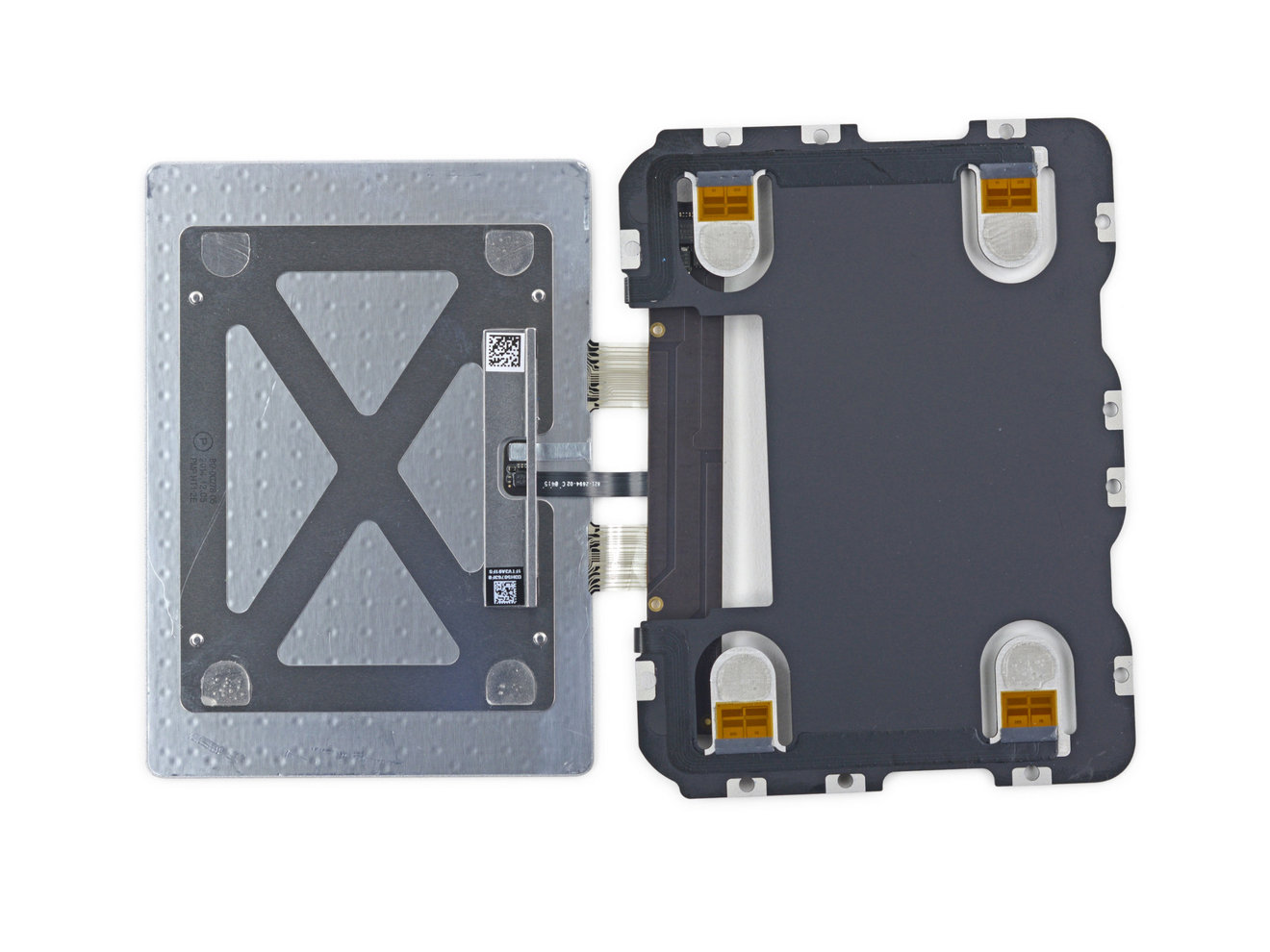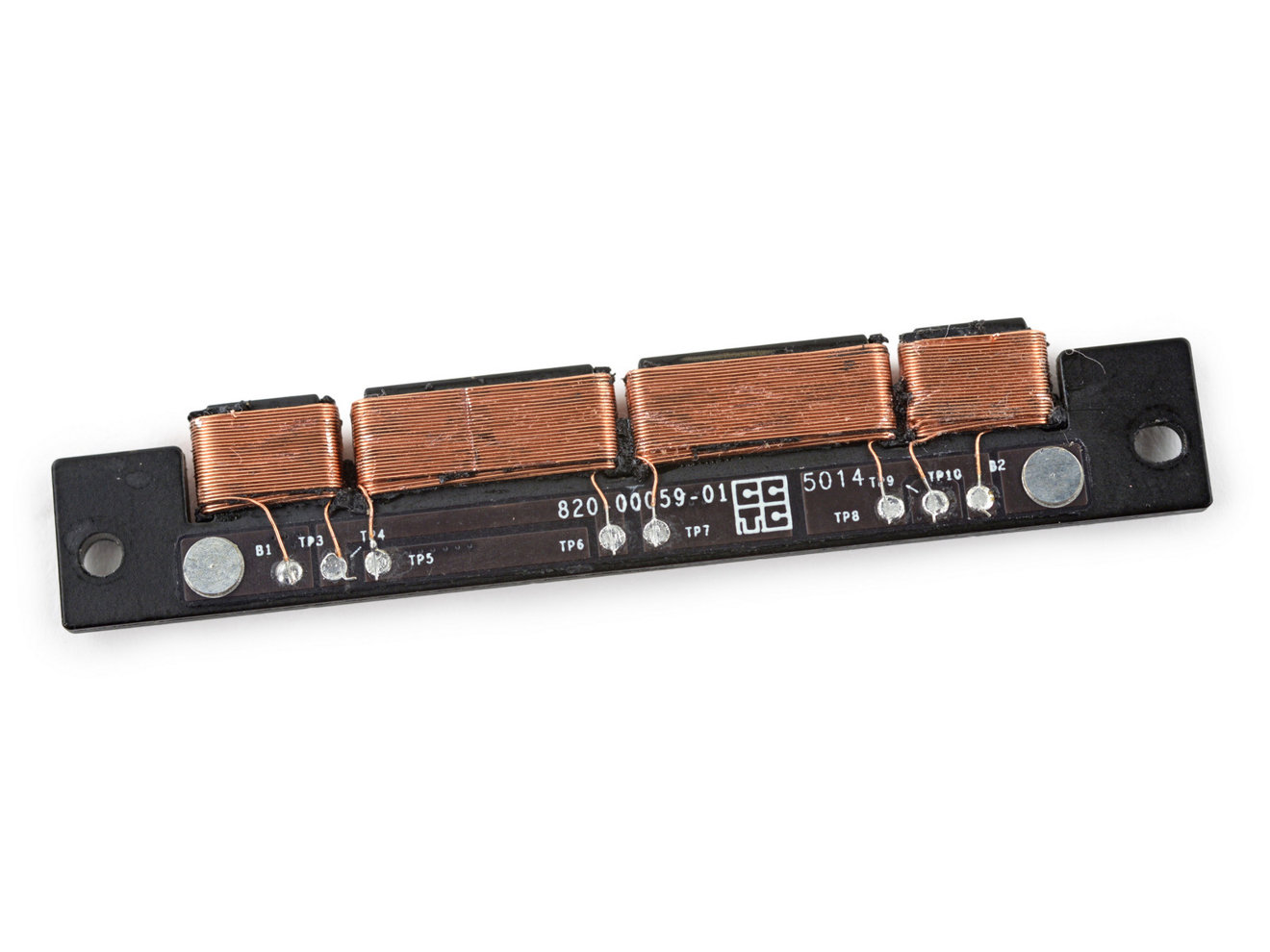The new "Force Touch" trackpad Apple introduced for its notebooks earlier this week has begun to arrive in consumers' hands in the refreshed 13-inch MacBook Pro, and a teardown of that device shows off the trackpad's construction while shedding light on storage technology shared between the company's computers.
Apple's latest 13-inch MacBook Pro is largely similar to its predecessor, repair firm iFixit notes in its disassembly. Some chips have been moved around and the layout of the logic board slightly altered, but the all-new 'Force Touch' trackpad is the largest change.
Prying apart the new trackpad, the company found four electromagnets that push and pull on a small metal rail. Apple touched these briefly during its "Spring Forward" event on Monday, but did not mention the method in which they operate.
Speculation suggests that Apple may vary which electromagnets are activated for a given press event, using different combinations to react to the force and position of the press on the trackpad.
The force sensing mechanism relies on four small strain gauges affixed to flexible mounts in each corner of the trackpad. These gauges likely measure the deformation of the mounts, using that data to evaluate the force of the user's press.
Apple also brought its new flash memory architecture to the MacBook Pro, with the laptop sharing the same Samsung memory and controllers as the refreshed MacBook Air. Apple says this storage is twice as fast as the previous generation, claims largely backed up by benchmarks.
In all, iFixit gave the new MacBook Pro an unsurprising repairability score of 1 out of 10, citing the proprietary pentalobe screws, fused Retina display, and copious amounts of adhesive. This is unlikely to pose problems for most Mac buyers, who can simply return their devices to Apple for service in the event of a problem.
 AppleInsider Staff
AppleInsider Staff










 Marko Zivkovic
Marko Zivkovic
 Mike Wuerthele
Mike Wuerthele
 Christine McKee
Christine McKee
 Amber Neely
Amber Neely
 Sponsored Content
Sponsored Content
 Wesley Hilliard
Wesley Hilliard

 William Gallagher
William Gallagher








54 Comments
"Teardown of Apple's new 13" MacBook Pro reveals 'Force Touch' trackpad, shared tech with new MacBook Air"
How do you reveal something that's public knowledge? Apple's own videos show more than this teardown.
I'm quite disappointed that only the top line 13" MBP is available with 512GB Storage.
"Teardown of Apple's new 13" MacBook Pro reveals 'Force Touch' trackpad, shared tech with new MacBook Air"
How do you reveal something that's public knowledge? Apple's own videos show more than this teardown.
Plus I'm pretty sure this is shared tech with the new MacBook, not the new MacBook Air.
Apple's website lists Force Touch under the MBP but not the MBA.
I see a bunch of Windows OEMs have taken to Twitter to mock the new MacBook. They obviously saw all the OMG I WANT ???? and I NEED ???? posts on Twitter and Instagram, especially for the gold version. :smokey:
I must be fickle...I'd buy it b/c it's so thin, light and gold! :)